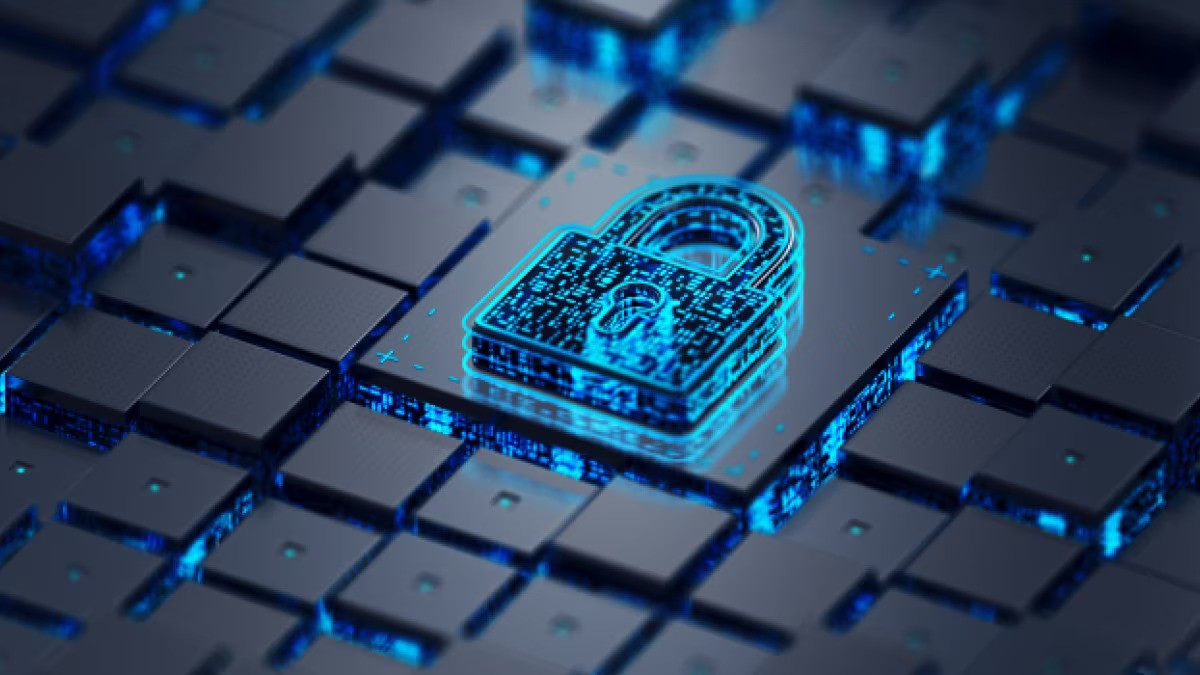Cybersecurity In Banking - Definition, Types, And Importance
Being at the forefront of technology integration in this age of digital breakthroughs, the banking sector is particularly vulnerable to cyber-attacks. Cybersecurity in banking is now more than just a term; it stands as an essential line of defense against criminals who target financial systems for their exploits.
Author:James PierceReviewer:Camilo WoodJan 08, 202446 Shares22.7K Views

Being at the forefront of technology integration in this age of digital breakthroughs, the banking sector is particularly vulnerable to cyber-attacks. Cybersecurity in bankingis now more than just a term; it stands as an essential line of defense against criminals who target financial systems for their exploits. Recognizing and addressing the most pressing cyber risks has assumed critical importance as financial institutions deepen their immersion in digital transformation.
What Is Cybersecurity In Banking?
Cybersecurity encompasses a set of technologies, protocols, and methods designed to safeguard against various threats such as attacks, damage, malware, viruses, hacking, data theft, and unauthorized access to networks, devices, programs, and data.
In the banking sector, the paramount objective of cybersecurity is to ensure the protection of users' assets. With the increasing shift towards a cashless society, a growing number of transactions are conducted online. Individuals rely on digital payment methods such as debit and credit cards, necessitating robust cybersecurity measures to safeguard these transactions and the sensitive information associated with them.
Importance Of Cybersecurity In Banking
The banking sector places a significant emphasis on cybersecurity, recognizing its pivotal role in establishing and maintaining credibility and trust—a cornerstone of the industry. Several factors underscore the importance of cybersecurity in banking, urging a heightened level of attention:
- Digital transformation -With an increasing trend towards a cashless society and the widespread use of digital payment methods such as debit and credit cards, ensuring robust cybersecurity measures becomes imperative to safeguard user privacy and data.
- Trust implications -In the aftermath of data breaches, trust in financial institutions may be severely compromised. The potential migration of consumers to other institutions underscores the critical role cybersecurity plays in preserving a bank's customer base.
- Time and financial impacts -Data compromises often result in substantial losses of time and money for both the banks and their customers. The recovery process involves arduous tasks such as card cancellations, statement reviews, and constant vigilance for any potential issues.
- Personal information misuse -The inappropriate use of private information can have severe consequences. Even if immediate action is taken, such as card revocation and addressing fraud promptly, sensitive data may still be exploited, posing a threat to individuals.
- Heightened responsibility for banks -Given the wealth of valuable personal data banks possess, they must exercise greater caution compared to other industries. Failure to safeguard this information from cybercrime risks could lead to its compromise, necessitating an elevated commitment to cybersecurity measures.
Top Cybersecurity Threats In The Banking Industry
Within the realm of cybersecurity risks faced by financial institutions, certain prevailing threats have garnered prominence in 2023. Examining the primary challenges confronting the banking industry provides valuable insights into the landscape:
Malware And Ransomware
Malware and ransomware persist as persistent and evolving threats. These sophisticated attacks, often initiated through phishing emails, involve infecting computers with malicious software that encrypts data, leading to restricted access.
Subsequently, cybercriminals demand a ransom for the restoration of data access. The repercussions of such attacks include business disruptions, financial losses, and damage to the reputation of banking organizations. Also, cybercriminals exploit vulnerable web services to deploy ransomware on a larger scale.
Phishing
Phishing remains a favored tactic among cybercriminals for spreading malicious software. Through deceptive means, individuals are tricked into installing malware on their devices.
Attackers may also seek to extract personal details from customers under pretenses. Phishing emails, disguised as official bank correspondence, can be employed to gain access to financial information and pilfer funds from customer accounts. Employees may also be targeted to obtain login credentials for accessing sensitive customer data.
Cyber Risks Of Remote Workunder false
With the widespread adoption of remote work, particularly in the aftermath of COVID-19 lockdowns, the banking sector faces increased cyber risks associated with this practice. Remote workers accessing critical or sensitive information pose significant cybersecurity challenges.
Working from various locations using personal devices introduces additional vulnerabilities, as banking IT specialists may have limited control over the security of these devices. To address these risks, banking organizations must prioritize cybersecurity education for remote employees, ensuring they can recognize and mitigate potential threats in a remote work environment.
Distributed Denial Of Service (DDoS)
A Distributed Denial of Service (DDoS) attack leverages a botnet, which is a network of interconnected online devices, to inundate a target website with falsified traffic. Unlike other cyberattacks that aim to compromise security, a DDoS attack focuses on overwhelming network, server, or application resources to render them unavailable to the intended audience.
Also, DDoS attacks can serve as a smokescreen for other malicious activities and may disable security devices, compromising the overall security of the target. Notably, there was a 30% increase in DDoS attacks within the financial services industry during the pandemic.
Unencrypted Data
The presence of unencrypted data on a bank's devices poses significant risks, opening avenues for potential threats. When sensitive information is left unencrypted, hackers can easily access it and exploit it for malicious purposes against both the bank and its customers. To mitigate this risk, it is imperative to ensure that all stored information is encrypted. This preventive measure ensures that even if data is stolen from a computer, fraudsters are unable to use it due to its encrypted nature.
Internet Of Things (IoT)
The evolution of 5G networks introduces new cybersecurity challenges associated with the Internet of Things (IoT). The relatively nascent architecture of 5G networks may harbor vulnerabilities that have not been thoroughly researched. Consequently, each interaction within the network may potentially lead to novel cyber-attacks. Devices communicating with each other via 5G become more susceptible to external threats, emphasizing the need for heightened security measures.
Smartphone Viruses And Malware
The increasing popularity of mobile banking has made mobile devices a target for cyber threats. According to Check Point research, mobile malware infections surged by 50% from 2018 to 2019, affecting approximately 25 million smartphones. As individuals transition to cashless transactions and store sensitive data on their mobile devices, hackers seek to exploit smartphones by infecting them with viruses and malicious software.
Cloud-Based Cyber Attacks
The reliance on cloud storage by many financial services makes cloud-based attacks increasingly prevalent. Cybercriminals orchestrate mass attacks to obtain confidential information stored in the cloud. Financial institutions must exercise caution and implement secure configurations for their cloud infrastructure to prevent data breaches.
Cyber Attacks Delivered Through Software Supply Chain
Malicious software distribution through a bank's supply chain presents a unique threat, allowing cyber attackers to compromise distribution systems and maintain a prolonged presence. These attacks often disguise themselves as legitimate updates containing malicious code. To thwart such cyber threats, financial organizations should educate their clients about the potential risks associated with updates and adopt measures to safeguard personal details from being compromised.
AI Technologies
The integration of artificial intelligence (AI) in cybersecurity yields numerous advantages, enabling the creation of advanced automated security systems that enhance the security protocols of financial institutions and mitigate cyber threats. However, it is crucial to be aware that cybercriminals can also use AI-driven tools to create intelligent malware tools, enabling them to deploy malicious code that can defeat sophisticated security systems.
Social Engineering Attacks
Social engineering, akin to phishing, encompasses cyber threats that may pursue diverse objectives. This category includes whaling attacks or the dissemination of fake invoices. Social engineering relies on behavioral tactics to coerce individuals into divulging confidential or sensitive information or surrendering funds to cybercriminals.
Attackers often employ methods centered on building trust and maintaining a polite demeanor. Educating customers and employees about these tactics is crucial, as people constitute the most vulnerable link in this chain.
Fraud And Identity Theft
While not novel, fraud and identity theft remain effective cyber attacks on the financial sector. These attacks take various forms, utilizing diverse channels to access personal data. Implementing modern cybersecurity strategies is imperative to shield customers and employees from such threats, incorporating tools capable of detecting suspicious account activity and blocking it to prevent further criminal actions.
Spoofing
Spoofing, a type of fraud reminiscent of phishing but more intricate, involves creating fake domains closely resembling legitimate ones. In this form, less attentive customers may mistake the fake domain for a genuine bank service, unwittingly sharing their data with attackers.
Also, fraudsters may use fabricated phone numbers indistinguishable from legitimate ones to text or call bank clients, adding a layer of complexity to this deceptive tactic. Vigilance and awareness are crucial in recognizing and thwarting spoofing attempts.
Applications Of Cybersecurity In Banking
The landscape of cybersecurity threats is ever-changing, demanding proactive measures from the banking sector to fortify its defenses. Hackers constantly evolve their tools and strategies to exploit vulnerabilities, making it essential for financial institutions to adopt a diverse array of cybersecurity tools and approaches to safeguard their data and systems. Recognizing that the strength of the financial cybersecurity system is contingent on its weakest link, here are key cybersecurity tools:
Network Security Surveillance
Network monitoring involves the continuous scanning of a network for indications of malicious or intrusive activities. Often used in conjunction with other security solutions like firewalls, antivirus software, and Intrusion Detection Systems (IDS), this software facilitates both manual and automatic network security monitoring.
Software Security
Application security is paramount for protecting critical business applications. Features such as application allow-listing, code signing, and synchronization of security policies with file-sharing permissions and multi-factor authentication contribute to robust software security. The integration of AI in cybersecurity is expected to enhance software security measures.
Risk Management
Financial cybersecurity incorporates risk management, addressing aspects like data integrity, security awareness training, and risk analysis. Key components of risk management encompass evaluating risks and implementing preventive measures to mitigate potential harm. Data security is integral to safeguarding sensitive information within this framework.
Protecting Critical Systems
Wide-area network connections play a crucial role in preventing attacks on extensive systems, adhering to the stringent safety standards established by the industry. Users are encouraged to follow cybersecurity measures to protect their devices, with continuous monitoring of all programs and regular security checks conducted on users, servers, and the network.
Challenges In Implementing Cybersecurity In Banking
Several contributing factors pose significant challenges to digital cybersecurity in the banking sector. The following are noteworthy elements:
- Lack of cybersecurity awareness - The general understanding of cybersecurity among the public remains relatively low, with few businesses making substantial investments in raising awareness about cyber threats.
- Limited budgets and inadequate management - Cybersecurity often receives inadequate budget allocations due to its perceived low priority. Insufficient attention from top management and a low priority status for cybersecurity programs contribute to this issue, potentially underestimating the severity of associated risks.
- Poorly managed identities and access - Effective cybersecurity hinges on robust identity and access management, especially crucial in the current landscape where hackers can gain access to a business network with just one compromised login. While there has been some progress, further efforts are needed in this domain.
- Rise in ransomware attacks - Recent cyber threats, notably ransomware attacks, underscore the escalating danger. Cybercriminals are employing various techniques to evade detection by endpoint protection code that traditionally focuses on executable files.
- Vulnerabilities associated with smartphones and apps - The prevalence of mobile device usage in banking transactions has made them an attractive target for exploiters. As the base of mobile users grows daily, there is an increasing risk associated with cybersecurity on these platforms.
- Exploitation through social media - The adoption of social media has provided hackers with additional avenues for exploitation. Less knowledgeable users may inadvertently expose their data on public platforms, providing attackers with opportunities for abuse.
Cybersecurity In Banking - FAQ
Does Cybersecurity Require Coding?
For most entry-level cybersecurity jobs, coding skills are not required. However, as cybersecurity professionals seek mid or upper-level positions, coding may be necessary to advance in the field.
Is It Hard To Study Cyber Security?
Although degrees in cyber security are typically not as tough as those in research or lab-intensive fields like science and engineering, they are generally more challenging than non-research degrees like those in the humanities or business.
Is Cyber Security A Lot Of Math?
Most entry-level and mid-level cybersecurity positions like cybersecurity analyst aren't math intensive. There are a lot of graphs and data analysis, but the required math isn't particularly advanced. If you can handle basic programming and problem-solving, you can thrive.
Is Cyber Security A Lot Of Money?
The average cybersecurity salary for this position falls between $102,000 and $208,000, and it is worth every penny. These security professionals help create, plan, and carry out security measures to keep your infrastructure secure.
Conclusion
Several articles from various perspectives underscore the undeniable significance of prioritizing cybersecurity in banking. The evolving nature of cyber threats requires constant vigilance and adaptation to preventive mechanisms. As the banking sector becomes more interconnected and technologically advanced, stakeholders must collaborate, invest, and stay informed to fortify their defenses.

James Pierce
Author

Camilo Wood
Reviewer
Latest Articles
Popular Articles

